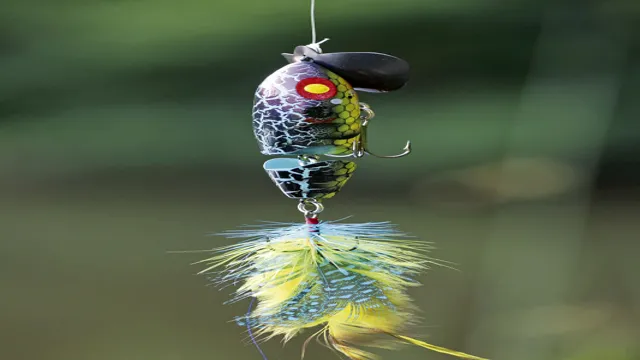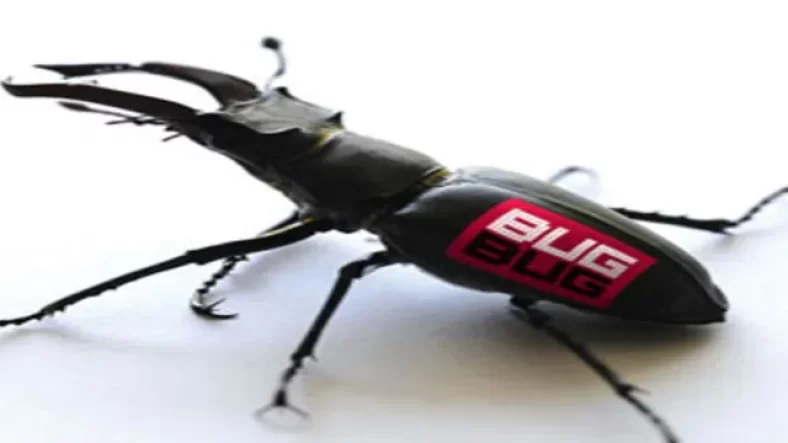Do you remember hearing as a child about the Jitterbug, a creepy-crawly bug that would give you the jitters if it got too close? Or maybe you’ve heard stories about adults finding a Jitterbug in their home and calling in exterminators to get rid of the infestation. But the question remains: is the Jitterbug a real bug or just a myth? Well, the short answer is that there is no such thing as a Jitterbug. Despite its widespread presence in childhood folklore, no scientifically recognized species of bug matches the description of the Jitterbug.
However, there are many different bugs that can cause jitters or anxiety in people, such as spiders, cockroaches, or even harmless insects like moths or butterflies. So why do we still talk about the Jitterbug as if it’s a real thing? Perhaps it’s because the name itself is so evocative – it suggests something frenzied, erratic, and unpredictable. In that sense, the Jitterbug might be seen as a metaphor for our collective fears and anxieties.
Just like the bug that gives you the jitters, there are many things in life that can make us feel unsteady, uneasy, or downright scared. In this blog, we’ll explore the origins of the Jitterbug myth, as well as some of the science behind why bugs can make us feel jittery. We’ll also offer some tips for overcoming your fear of bugs, whether you’re dealing with harmless house flies or venomous spiders.
So put on your bug-proof boots and join us as we venture into the world of the Jitterbug – whether it’s real or not.
What is a Jitterbug?
When we hear the word “jitterbug,” many of us might immediately imagine a small, wiggly insect. However, in reality, a jitterbug is not a real bug at all! Rather, it is a type of dance that became popular in the United States in the 1930s and 1940s. The jitterbug is a lively, energetic dance style that incorporates many acrobatic movements such as flips, lifts, and spins.
It is typically performed to swing music, and is often associated with the big band era. Although the jitterbug is no longer as popular as it once was, it remains a beloved part of dance history and is still performed by dance enthusiasts all over the world. So no, a jitterbug is not a real bug – it’s a dance style that can be just as lively and fast-moving as any insect!
Origin and Characteristics of Jitterbugs
A jitterbug is a type of swing dance that originated in the United States in the 1930s and 1940s. It is a lively and energetic dance that is characterized by fast footwork and big, energetic movements. The name “jitterbug” comes from the dancers’ tendency to appear as though they were shaking or “jittering” due to the fast pace of the dance.
Jitterbugs are known for their high-paced movements, such as jumps and lifts, as well as their acrobatic and athletic flair. Over the years, the dance has evolved and diversified, with different styles and variations emerging in different regions of the US. Despite this, jitterbug continues to be a popular dance style, with many people flocking to swing dance clubs and competitions to show off their skills and have some fun.
Whether you are an experienced dancer or a beginner looking to learn a new skill, jitterbug is a lively and entertaining dance that is sure to get your heart racing and your feet moving.

Mistaken Identity of Jitterbugs
Jitterbug Jitterbugs are often mistakenly identified as swing dancers. While they do share some similarities, the jitterbug is its own unique dance style with origins tracing back to the 1930s. It is a lively and energetic dance characterized by its bouncy and syncopated movements.
One of the defining features of the jitterbug is its improvisational nature, with dancers often incorporating flashy spins and lifts into their routines. The term “jitterbug” can also refer to the music that the dance is performed to, such as swing or rock and roll. Whether you’re a seasoned dancer or new to the scene, the jitterbug offers an exciting and fun way to move to your favorite tunes.
So next time you hit the dance floor, don’t be afraid to bust out some jitterbug moves and show off your fancy footwork!
Types of Bugs Mistaken for Jitterbugs
While the term “jitterbug” might make you think of a small, bug-like creature, it’s not actually a real type of insect. However, there are some bugs that might be mistaken for jitterbugs due to their fast movements. For example, some species of ants and beetles can move very quickly, and may appear to be “jittery” when they run or crawl.
Additionally, some types of spiders are known for their quick and jerky movements, which could also be confused with the motion of a jitterbug. Despite their similar movements, these insects and arachnids are all unique species with their own distinctive characteristics and behaviors, so it’s important not to confuse them with a nonexistent insect like the jitterbug.
Ladybugs, Stink Bugs and Boxelder Bugs
Ladybugs, Stink Bugs and Boxelder Bugs are often mistaken for Jitterbugs due to their similar black and red appearances. However, while Jitterbugs are harmless and non-invasive, Ladybugs are beneficial insects that can actually help control garden pests. Similarly, Stink Bugs and Boxelder Bugs are quite the opposite, and can actually cause damage to crops and homes.
Stink Bugs can emit a foul odor and destroy crops, while Boxelder Bugs can invade homes and leave behind unsightly stains. So, the next time you see a black and red bug in your garden or home, take a closer look to ensure they are actually Jitterbugs before you decide to leave them be or take action.
Differences and Similarities with Jitterbugs
When it comes to bugs, there are a lot of species that can easily be mistaken for jitterbugs. In fact, there are a few key differences and similarities between jitterbugs and other bugs that people often confuse them with. For example, spider crickets are often mistaken for jitterbugs due to their similar appearance and behavior.
Both types of bugs tend to jump around and move quickly, making it easy to mix them up. However, spider crickets are typically larger and have longer legs than jitterbugs. House crickets are another type of bug that can be mistaken for jitterbugs, but they have a distinct chirping sound that sets them apart.
Ultimately, if you’re unsure what type of bug you’re dealing with, it’s always best to consult with an expert.
Are Jitterbugs Real Bugs?
So, is a jitterbug a real bug? Well, the answer can be a bit complicated. While there is a dance style called the jitterbug, which was popular in the swing era, the term “jitterbug” can also refer to a group of insects. Specifically, a jitterbug is a colloquial term for a type of beetle that belongs to the family Elateridae.
These beetles are also commonly called “click beetles” because they have a unique way of escaping predators by quickly flipping themselves into the air with a loud clicking sound. So, while the term “jitterbug” may be associated more with dance halls than entomology, it is indeed a real bug.
Expert Opinion on the Existence of Jitterbugs
Jitterbugs are a topic of hot debate among bug enthusiasts, as their existence is still uncertain. Some believe that jitterbugs are real insects, while others argue that they are purely mythical creatures. However, there isn’t any concrete evidence that can confirm or deny the existence of jitterbugs.
Some people claim to have seen these creatures, which are said to resemble a mix between a moth and a butterfly, but there have been no confirmed sightings. While it’s tempting to believe in the existence of such charming and mysterious creatures, until there is proof, we have to consider jitterbugs as nothing more than a fascinating legend. So, for now, we can only sit back and enjoy the stories and myths surrounding these elusive bugs, while keeping an open mind about the possibility of their existence.
Jitterbugs in Folklore and Pop Culture
Jitterbugs are a popular term used in both folklore and pop culture. You may have heard the term in songs or movies, but are jitterbugs real bugs? The answer is no. Jitterbugs are imaginary bugs that were popularized in the 1930s and 1940s swing era.
They were used to describe people who loved to dance the jitterbug, a lively and energetic dance style. Although they are not real, jitterbugs have become a beloved part of cultural history and are still referenced today in various forms of media. So, if someone mentions jitterbugs, don’t go looking for actual bugs, just get your dancing shoes ready!
Conclusion: The Truth about Jitterbugs
In conclusion, while a jitterbug might sound like some sort of buzzing insect that you want to swat away, it is not actually a real bug. Instead, it refers to a lively and energetic dance style that was popular in the swing era of the 1930s and 1940s. So next time you hear someone mention a jitterbug, don’t reach for the bug spray – grab your dancing shoes instead!”
FAQs
What is a jitterbug?
A jitterbug is a type of dance that was popular in the swing era.
Is a jitterbug a real bug?
No, a jitterbug is not a real bug. It is just a name given to a type of dance.
Where did the term “jitterbug” come from?
The term “jitterbug” originated in the African American community in the 1930s and referred to a type of dance that involved fast, jerky movements.
How do I learn to jitterbug?
The best way to learn the jitterbug is to take lessons from a professional dance instructor who specializes in swing dancing.
Can anyone do the jitterbug?
Yes, anyone can learn to jitterbug, regardless of age or skill level. It just takes practice and determination to master the steps.


